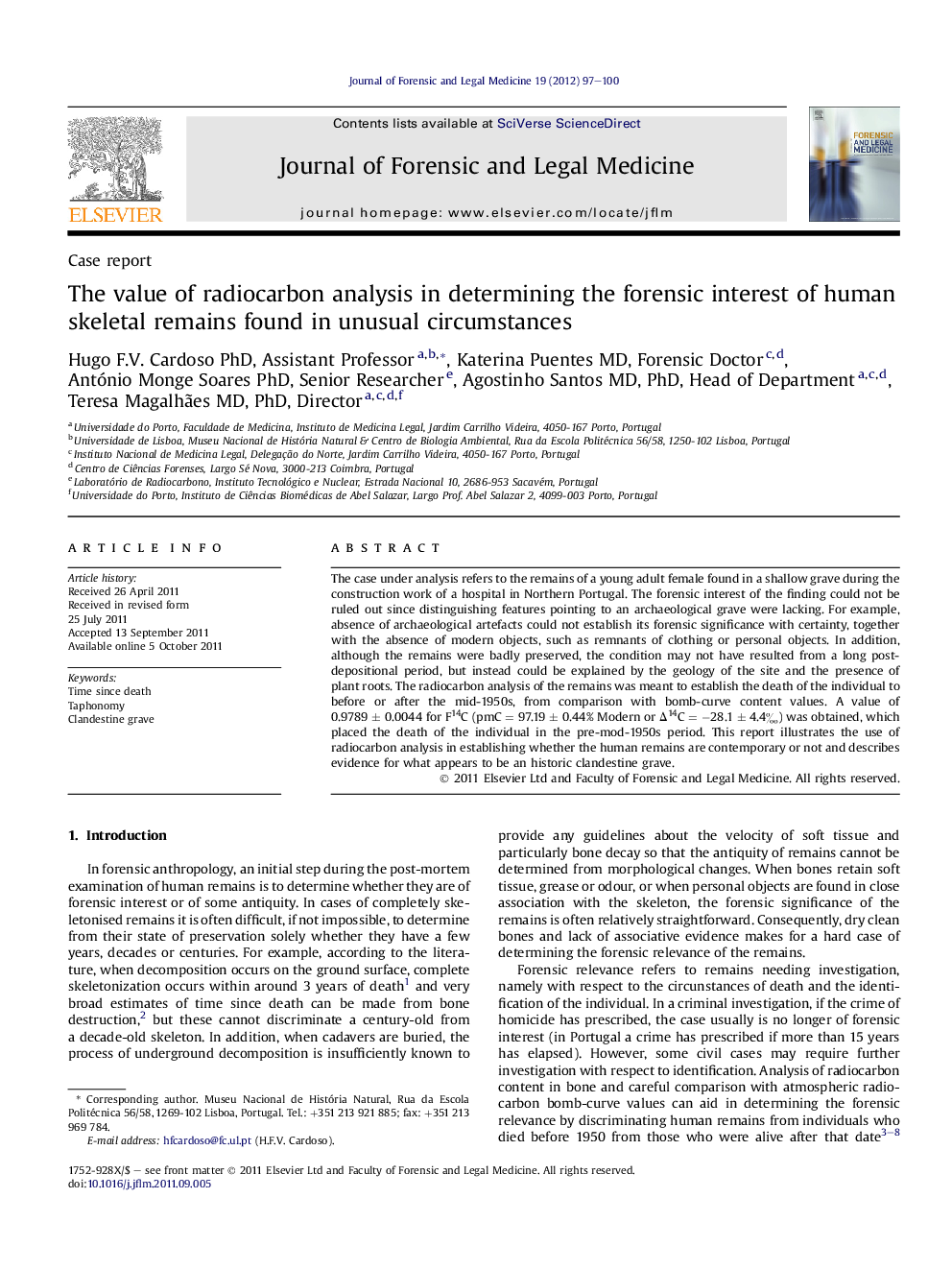| کد مقاله | کد نشریه | سال انتشار | مقاله انگلیسی | نسخه تمام متن |
|---|---|---|---|---|
| 102638 | 161334 | 2012 | 4 صفحه PDF | دانلود رایگان |

The case under analysis refers to the remains of a young adult female found in a shallow grave during the construction work of a hospital in Northern Portugal. The forensic interest of the finding could not be ruled out since distinguishing features pointing to an archaeological grave were lacking. For example, absence of archaeological artefacts could not establish its forensic significance with certainty, together with the absence of modern objects, such as remnants of clothing or personal objects. In addition, although the remains were badly preserved, the condition may not have resulted from a long post-depositional period, but instead could be explained by the geology of the site and the presence of plant roots. The radiocarbon analysis of the remains was meant to establish the death of the individual to before or after the mid-1950s, from comparison with bomb-curve content values. A value of 0.9789 ± 0.0044 for F14C (pmC = 97.19 ± 0.44% Modern or Δ14C = −28.1 ± 4.4‰) was obtained, which placed the death of the individual in the pre-mod-1950s period. This report illustrates the use of radiocarbon analysis in establishing whether the human remains are contemporary or not and describes evidence for what appears to be an historic clandestine grave.
Journal: Journal of Forensic and Legal Medicine - Volume 19, Issue 2, February 2012, Pages 97–100